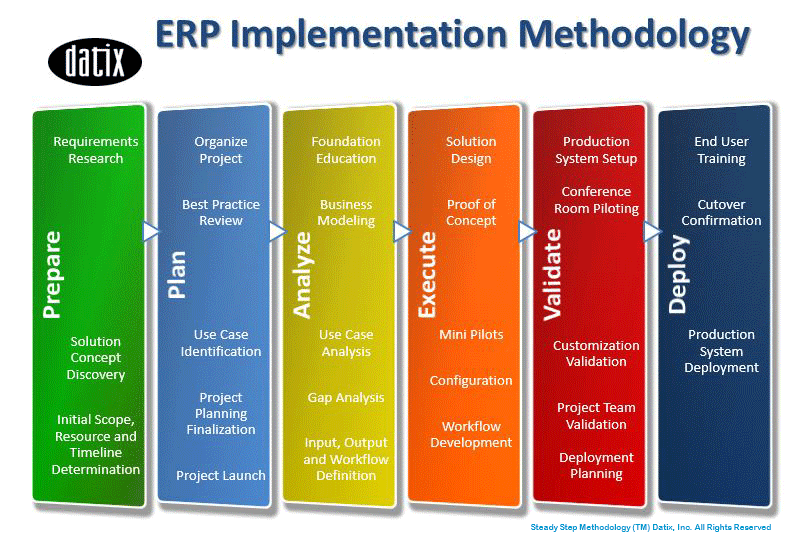First off, Happy New Year. If you’re like a lot of organizations, you’re considering the idea of implementing an ERP in 2015. This is no small project, and will likely consume a lot of
someones attention before it’s all said and done.
The trick to avoiding an ERP implementation nightmare is following a detailed and carefully executed implementation strategy. Successful ERP implementation is considered a huge project, and it takes keen oversight to ensure that the process goes smoothly. Perhaps the steps below can aide in your planning and execution in 2015.

Prepare
Talk about goals and deliverables. This begins when you select a vendor/partner to assist in implementation. A successful partner should aide in the optimal preparation, evaluation, and implementation of your new ERP (“Epicor”, “Infor”, etc.). Having a strong initial evaluation will ensure a seamless implementation. Identify business cases, initial timeline, and scope. At the end of this stage, have a signed contract in place with an expert who can deliver you from point A to point B with confidence.
Plan
This stage is really the beginning of the project. Identify resources, success criteria, risks, and define the scope. The key tasks for your project should include meeting with your project manager, defining a project plan, and hosting a kickoff meeting. You should be taking time during this period to discuss initial process models and assignments. At the end of this stage, you should have in hand a dynamic project plan that all parties agree on.
Analyze
This is where you should begin educating the internal organizational stakeholders on fundamental knowledge of the ERP system. Have a detailed understanding of your business processes and needs, and have detailed knowledge of any specific customizations and designs desired by the organization (this is critical). At the end of this stage you should be sure to have updated functional business process models, estimates, and a completed use case catalog.
Execute
The goal at this stage is to configure piloting of your new system and it’s processes. This is a vital stage. All reporting and customization should be tested and in working order. Evaluate the system using your use cases and day-to-day functions. All configuration documents should now be complete.
Validate
You should possess a new, fully functioning system. You should have a pilot system setup and your reports, workflow, and customizations all loaded. Deployment planning should be in place along with end-user training procedures. Once complete, validation of the new ERP system should ultimately be signed off on by the project team prior to deployment.
Deploy
This is the “go-live” stage. Everything has been building toward this final piece. You should have a “go-live” checklist to ensure that all elements of the project are executed properly. Make sure that those implementing your ERP are engaged in the process so that everything operates smoothly. Your system should now be fully configured. At this point, you may decide that continual training and help maintaining the system is necessary. If that’s the case, reach out to any partners in the process and share your feedback.
—
This process does take time but it is worth it. The entire process is time-intensive and challenging, but in the years to come it will be well worth it. Ultimately, a smooth implementation – like the one listed above – should not be difficult or painful. Successful organizations do it everyday.
Your Take on Successful ERP Implementation?:
Tell us about a time when you followed an successful ERP implementation plan and it worked well for your business. What pitfalls, challenges, or successes has your business experienced?
Suggested:
More information about Epicor ERP – https://datixinc.com/solutions/epicor/
Learn about our ERP consulting services – https://datixinc.com/services/erp-consulting/
Read our Epicor training tips – https://datixinc.com/category/epicor/epicor-tips-training/
For more information about Epicor implementation contact our Datix ERP experts today.


